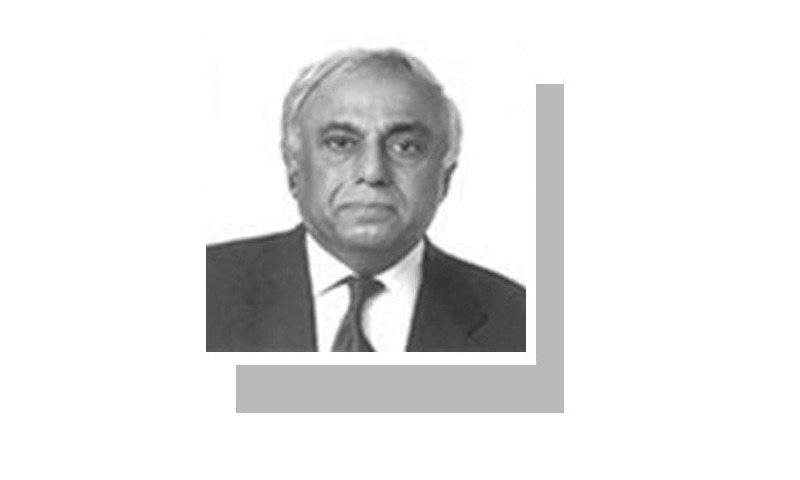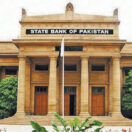By Rashid Amjad
Published in DAWN on January 18, 2024
IN a recent article in Dawn, the World Bank South Asia vice president, together with the country director, put forward a five-point development strategy to move Pakistan onto a path of sustained and equitable growth. Encompassing improving human capital, generating additional revenues, opening up the economy, transforming agriculture and removing energy inefficiencies, few would disagree with their listed priorities in the medium to long term.
Yet they seem to overlook that the real problem Pakistan faces is in the immediate future; its economy comes to a grinding halt whenever any attempt is made to move it off the ground and move forward. Why?
To illustrate: after achieving near six per cent growth in the preceding two years, 2022-23, the economy abruptly reversed direction as economic growth became negative, inflation rose to an unprecedented 35pc, the country came perilously close to default as reserves fell to less than a month of imports, and poverty levels increased. Even given specific factors such as external shocks (war in Europe, resulting in a sharp rise in oil and food prices) and internal shocks (floods) coupled with poor economic management, it was not the first time this had happened. Over the last three decades, we have gone through frequently recurring stop-go cycles in which episodes of growth have become shorter and shorter, and episodes of very low growth longer and more frequent.
It is time we seriously questioned some critical aspects of the macroeconomic model we have followed, which has created this recurring situation. While no one can deny that, by running huge unsustainable fiscal deficits, our own policymakers must share a large part of the blame, we must also seriously examine some IMF conditionalities, which, rather than improving, accentuate the problem by opting for purely market-driven solutions to resolve basic structural deficiencies in the economy.
We must seriously examine some IMF conditionalities.
To elaborate, the IMF’s solution to our recurring stop-go cycles was to opt for a market-driven exchange rate and reduce tariffs on imported raw material to encourage more competitive exports — which, in theory, was not unwise. But in doing so, it failed to take into account the working of Pakistan’s complex, multilayered, imperfect foreign exchange market. With a large diaspora and migrant workers abroad who send back as remittances an amount equal to or slightly more than our total export earnings, foreign exchange transfers by resident Pakistanis (including for investment in real estate abroad), hoarders, smugglers and profiteers in the domestic market had disastrous consequences. The rupee-dollar exchange rate came crashing down from Rs110 in 2018 to Rs340 in 2023 once the market-driven exchange rate was introduced, triggering uncertainty and fanning inflation. Foreign reserves again fell to disastrously low levels, fuelled also by large inflows of imports resulting from lower tariffs, thereby bringing the economy to the very edge of default.
The exchange rate would have gone further down — possibly to Rs400 by June 2024 — but for the timely strong-arm action taken by the government’s new and powerful economic decision-making body, the Special Investment Facilitation Council. The SIFC came down hard on hoarders, profiteers and illegal currency networks manipulating the exchange rate market (including some commercial banks, one is sorry to suggest). Since then, the exchange rate has steadied at between Rs280 and Rs300 to the dollar.
To move out of these recurring crises and reignite growth with macroeconomic stability, it is important for the next elected government to propose important changes in a future continuation of the IMF programme, which, given our current situation, is highly desirable. These are as follows:
- Move away from the market-driven exchange rate in favour of a managed exchange rate, while ensuring that it is in line with the real effective exchange rate to maintain export competitiveness and adjusts for relative rises in inflation.
- Build up our reserves in as short a time as possible through innovative solutions, including diverting at least 10pc of any new foreign investment into a sovereign reserve fund and 10 to 15pc of foreign exchange from the remittances sent annually by our workers and diaspora abroad.
- Draw a red line at a level below which our reserves will not be allowed to fall (say, initially three months’ imports or $15 billion) and if they do, take suitable measures to reduce imports.
A prudently managed exchange rate supported by adequate reserves would reduce market uncertainty and lift economic activity and investment, ensuring steady growth. The country urgently needs to revive growth with macroeconomic stability.
The writer is a professor at the Lahore School of Economics and former vice chancellor of the Pakistan Institute of Development Economics.






